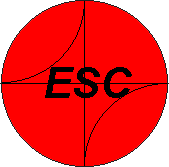 |
SC-B Data Acquisition, Theory and Interpretation
WG History and Data of Instrumental Seismometry
|
From WG History of Seismometry to
History and Data of Instrumental Seismometry
G. Ferrari
(former Chairman of the WG History of Seismometry 1992-2002)
In the ten years in which the WG has officially operated the number of communications and the level of participation in our sessions has progressively increased. Born ad personam, on the basis of the experience I had developed in Italy with the TROMOS project, the WG has started to lose its anamolous character and has instead taken on an increasingly important scientific, cultural and educational role. These roles may seem to be rather distant from each other, yet in actual fact, taken as a whole, they are reciprocally functional to a complex vision of the seismological problems of all the ages. Knowing the past in order to plan the future is not merely a slogan, but a key for interpreting our daily scientific work. Today, just as a century ago, in spite of the enormous technological strides forward, that are at times even programmable, we can be sure in the knowledge that of the data we are collecting, we are able to use or understand the significance of only a small proportion.
Reconstructing the histories of observatories, biographies and instruments is not useful to us to explain the limits of the scientific paradigms, thetechnologies or the processing tools, but rather to understand the residual informational potential of the instrumental historical data.
We are faced with an apparent paradox in instrumental seismology: the more the interpretative techniques are honed, the more information is gleaned from the historical recordings produced in theoretical and technological contexts that are very different from those of today.
To conclude this 'pioneering' phase we can already envision new, important objectives, partly outlines in the topics of the SC-B5:
- the historical heritage of seismology: observatories, instruments (periods of working and characteristics of the instruments, calibration, etc.), seismic bulletins, seismological biographies;
- correspondence in seismology and its scientific relevance;
- methods for elaborating the historical seismograms: from raster images to parameters (scanning resolution, quality, various corrections, etc.);
- the history of the ESC and the other important international seismology associations.
Considering the complexity of goals of the new definition of the working group I proposed (at the Business Meeting of the SC B) to update the name of the WG as:
History and Data of Instrumental Seismology.
Having reached the end of my mandate as coordinator of the WG HoS, I have the satisfaction of not leaving a void behind, but of being able to count on colleagues and friends who over the past few years have known how to share my enthusiasm and have helped me to achieve the objectives of the WG and to add new ones. Amongst these, Josep Batllo’ I think could ensure continuity in terms of aims and results. Considering the broadening of the WG's aims, I offered my complete availability in flanking him until the next ESC assembly. Moreover, the new objectives of the WG suggests to strenght the structure of it by planning sub-topics when necessary. At the present moment I propose to set a sub-topic of the WG named: Historical Scientific Seismic Data versus Modern Seismology, devoted to the analysis of the scientific value of historical instrumental data. For the chairmanship of this sub-topic I proposed to charge N. Alessandro Pino of the Istituto Nazionale di Geofisica e Vulcanologia in Rome, because of his specific experience on this field.
Genova, September 4, 2002

Page maintained by M.G. Bianchi and Graziano Ferrari
SGA Storia Geofisica Ambiente, Via Bellombra 24/2 40136 Bologna Tel: 0039 51 333282 , Fax: 0039 51 332741
Last Revised: Sep 18, 2002